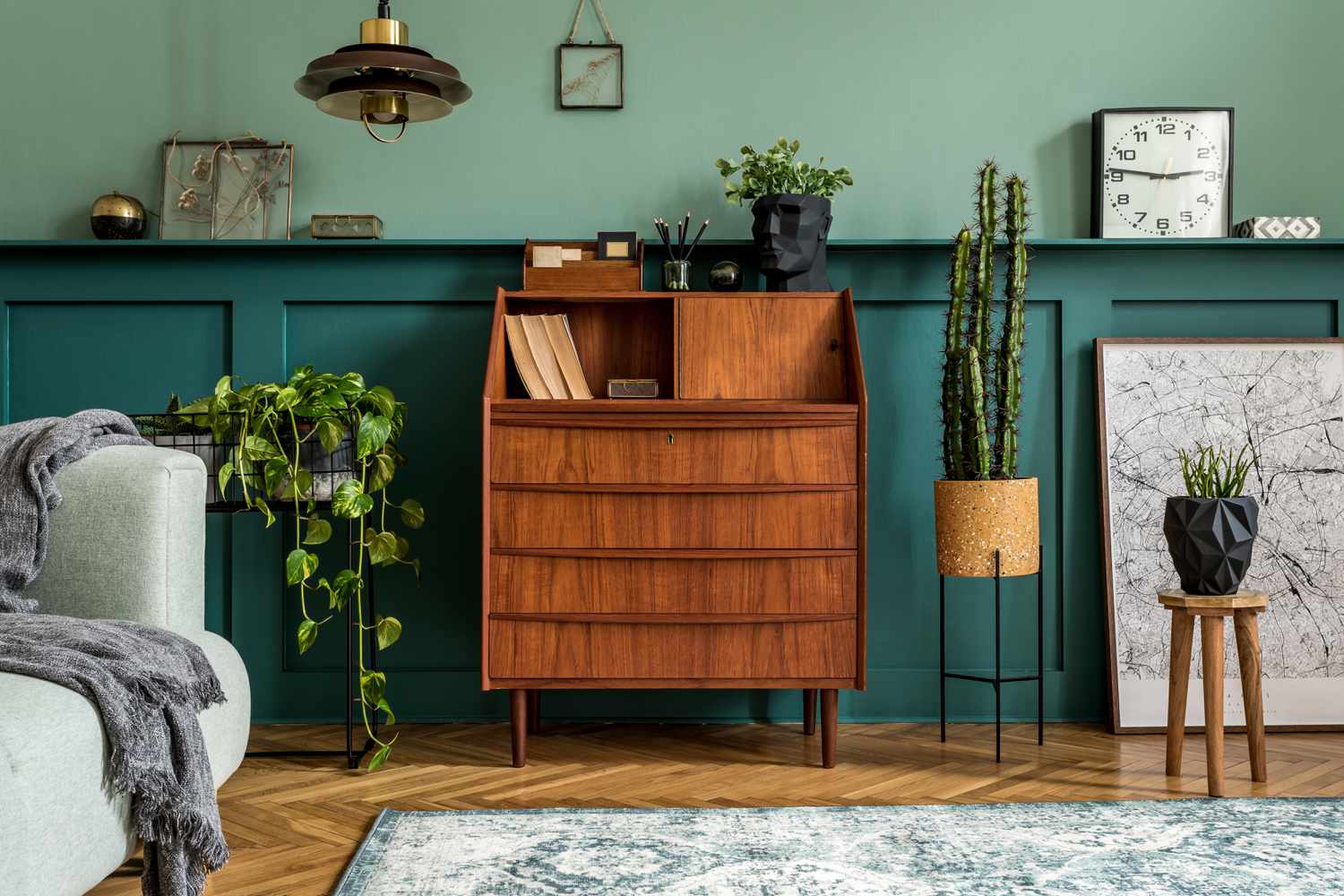There’s nothing quite like the natural beauty of wood. Whether it’s on-trend blonde wood flooring, vintage espresso wood paneling, or modern walnut wood cabinets—wood flooring and accents add true charm and depth to any room in the home. One way to make your wood stand out and look its best is with the paint color you choose for your walls and moldings. However, not every color will complement your wood tones. So how do you choose the right one? Here’s what the experts have to say.
Think About the Project as a Whole
Ruth Mottershead, Creative Director of suggests kicking off your painting project by considering all the elements in the room and how they come together. “This might include flooring, furniture, curtains, architectural details, and light sources,” she says.
Then, create a mood board. You don’t need anything fancy to do this. You can get creative with and , both of which are free and very easy to use.
Complement The Undertone
According to interior designer , selecting paint colors that complement wood tones can elevate the overall appeal of your home. “Wood tones typically encompass underlying hues like red, yellow, or gray,” she explains. “Take note of these undertones and opt for paint colors that blend seamlessly with them. For instance, if your wood features gray undertones, consider cool paint colors such as subtle blues or soft grays.”
Consider A Contrasting Shade
If you want to accentuate the natural tones of your wood, Switzer suggests going with a contrasting color. “For example, if your home features dark wood elements, like floors or furniture, lighter wall paint can create a stunning contrast,” she says.
For a really dramatic look, Mottershead recommends creating a dynamic interior with contrasting blue or teal colors such as or .
You Can’t Go Wrong With a Neutral Paint Color
If you’re not sure which paint color to choose and don’t feel like taking a risk, Switzer recommends choosing neutral hues, including white, cream, gray, or beige. “These colors work well with various wood tones, providing a flexible backdrop for showcasing the wood’s natural beauty.”
Looking for more specific ideas? Mottershead says the chic and the bold are versatile and complement most woods.
Be Inspired by Nature
There’s no better design inspiration than nature. So, Switzer advises choosing earth tones, including greens, blues, and browns to complement your wood. “These harmonize effortlessly with wood tones, imparting a tranquil and organic ambiance to your space,” she says. “By incorporating these natural hues, you can create a serene and cohesive atmosphere throughout your home.”
Looking for a green to compliment darker woods? “Dark woods, such as walnut or mahogany work fantastically well with green, from fresher hues such as for a contrasting feel, to sumptuous rich greens such as for an elegant interior,” says Mottershead.
Pair Dark Wood With a Similar Shade
If you love your warm, dark woods, Mottershead says you can opt for a similarly deep and warm shade on the surrounding walls. Her pick? Little Greene’s . This rich, timeless color looks fantastic in rooms that you want to give a romantic, cozy treatment, such as dining spaces and dens.

